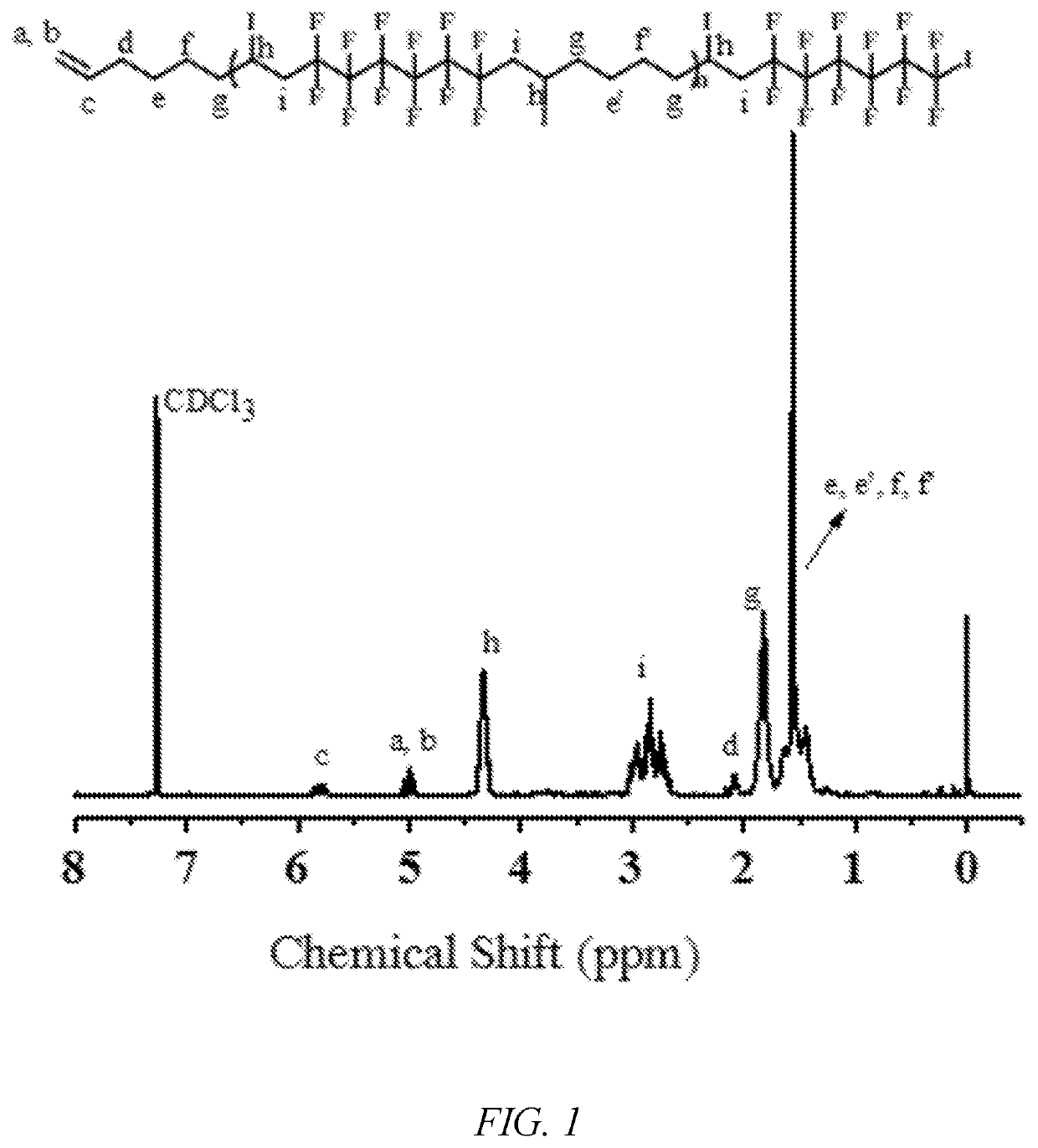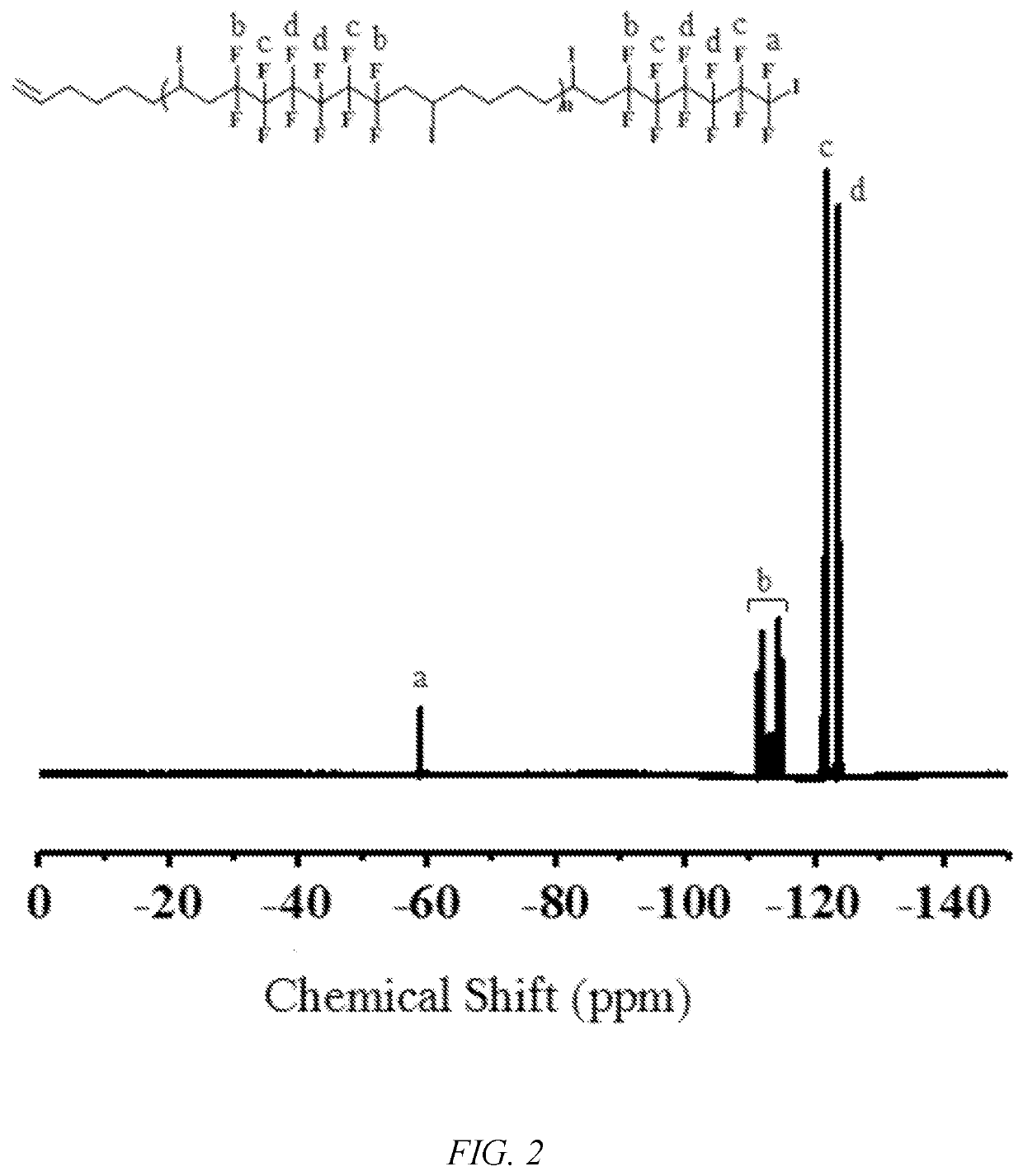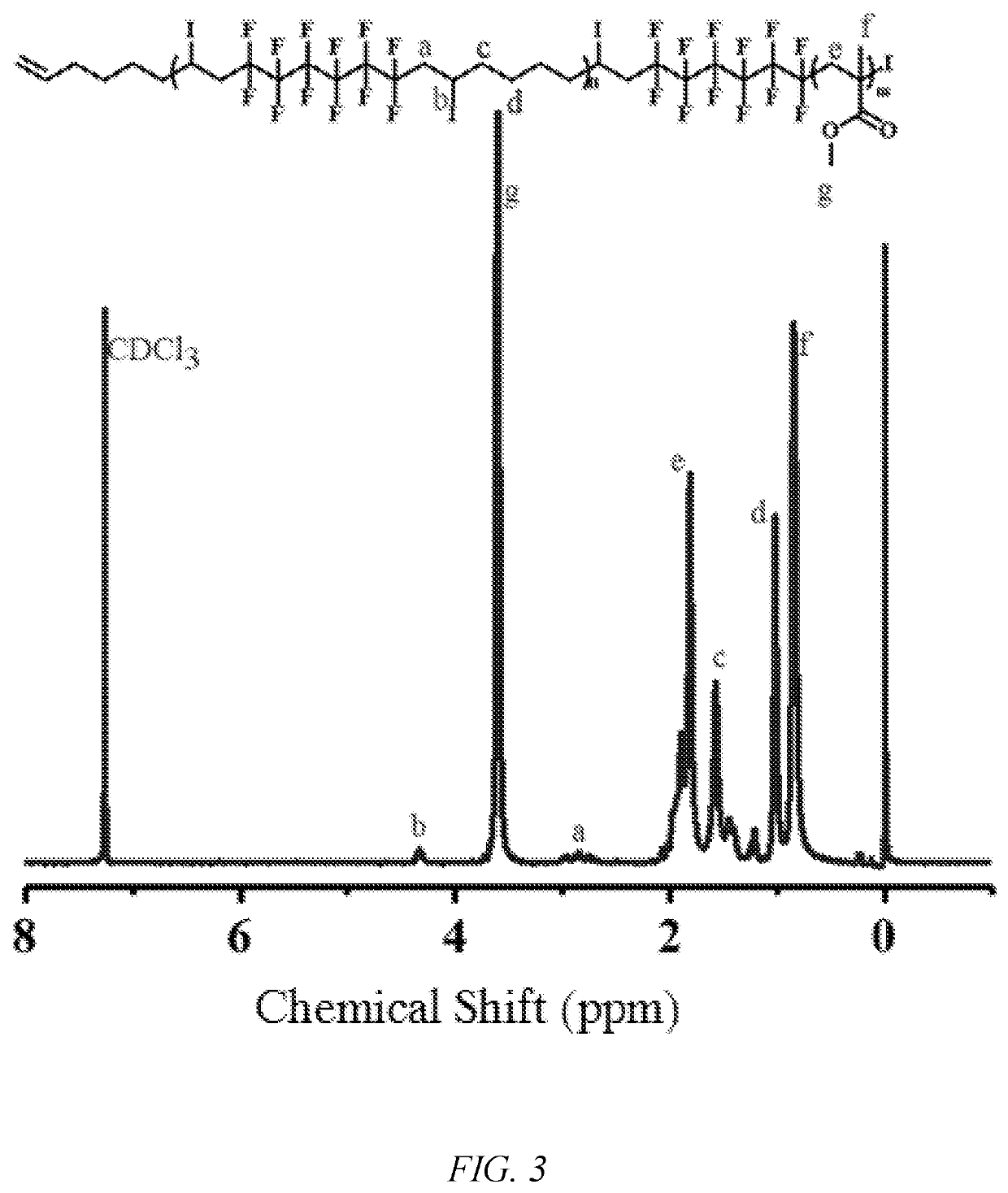Photopolymerization method for preparing block copolymer with main-chain semi-fluorinated alternating copolymer
- Summary
- Abstract
- Description
- Claims
- Application Information
AI Technical Summary
Benefits of technology
Problems solved by technology
Method used
Image
Examples
example 1
[0050]The monomer methyl methacrylate (5 mmol) to be polymerized, the alternating fluoropolymer macroinitiator (AB1)n (0.01 mmol), the photocatalyst tris (2,2′-bipyridine)ruthenium dichloride (Ru(bpy)3Cl2) (0.002 mmol), sodium ascorbate (AsAc—Na) (0.01 mmol), and acetone (0.5 mL) were added to a photoreaction tube, deoxygenated, and polymerized at room temperature under blue LED irradiation at 485 nm. After a predetermined time of reaction, the reaction tube was opened, a small amount of polymer solution was taken for test by 1H NMR spectroscopy, and the conversion rate of the monomer and the molecular weight (Mn,NMR) by 1H NMR spectroscopy were calculated. The rest of the polymer solution was dissolved in a certain amount of tetrahydrofuran. After passing through a neutral Al2O3 column, a precipitating agent was added, and after standing, suction filtering, and drying under vacuum, a block copolymer (AB1)n-b-PMMA of a “semi-fluorinated” alternating copolymer was obtained. FIGS. 1-2...
example 2
[0054]Various monomers (5 mmol) to be polymerized, the alternating fluoropolymer macroinitiator (AB1)n (0.025 mmol), the photocatalyst tris(2,2′-bipyridine)ruthenium dichloride (Ru(bpy)3Cl2) (0.005 mmol), sodium ascorbate (AsAc—Na) (0.025 mmol), and acetone (0.5 mL) were added to a photoreaction tube, deoxygenated, and polymerized at room temperature under blue LED irradiation at 485 nm. The molecular weight of (AB1)n is 4000 g / mol, and PDI is 1.40. After a predetermined time of reaction, the reaction tube was opened, a small amount of polymer solution was taken for test by 1H NMR spectroscopy, and the conversion rate of the monomer and the molecular weight (Mn,NMR) by 1H NMR spectroscopy were calculated. The rest of the polymer solution was dissolved in a certain amount of tetrahydrofuran. After passing through a neutral Al2O3 column, a precipitating agent was added, and after standing, suction filtering, and drying under vacuum, a polymer was obtained. The results are shown in Tab...
example 3
[0056]The monomer methyl methacrylate (5 mmol) to be polymerized, various alternating fluoropolymer macroinitiator (AB1)nA, (AB2)n or (AB3)n (0.01 mmol), the photocatalyst tris(2,2′-bipyridine)ruthenium dichloride (Ru(bpy)3Cl2) (0.002 mmol), sodium ascorbate (AsAc—Na) (0.01 mmol), and acetone (0.5 mL) were added to a photoreaction tube, deoxygenated, and polymerized at room temperature under blue LED irradiation at 485 nm. The molecular weight and PDI of (AB1)nA, (AB2)n or (AB3)n are respectively 6400 g / mol, 1.75; 2200 g / mol, 1.28; and 9800 g / mol, 1.91.
[0057]After a predetermined time of reaction, the reaction tube was opened, a small amount of polymer solution was taken for test by 1H NMR spectroscopy, and the conversion rate of the monomer and the molecular weight (Mn,NMR) by 1H NMR spectroscopy were calculated. The rest of the polymer solution was dissolved in a certain amount of tetrahydrofuran. After passing through a neutral Al2O3 column, a precipitating agent was added, and a...
PUM
| Property | Measurement | Unit |
|---|---|---|
| Nanoscale particle size | aaaaa | aaaaa |
| Fraction | aaaaa | aaaaa |
| Fraction | aaaaa | aaaaa |
Abstract
Description
Claims
Application Information
 Login to View More
Login to View More - Generate Ideas
- Intellectual Property
- Life Sciences
- Materials
- Tech Scout
- Unparalleled Data Quality
- Higher Quality Content
- 60% Fewer Hallucinations
Browse by: Latest US Patents, China's latest patents, Technical Efficacy Thesaurus, Application Domain, Technology Topic, Popular Technical Reports.
© 2025 PatSnap. All rights reserved.Legal|Privacy policy|Modern Slavery Act Transparency Statement|Sitemap|About US| Contact US: help@patsnap.com



